Text
A while back, my boyfriend and I were talking about feeling disconnected from our deities. I gave him some advice that I’d like to repeat here.
First, it is not a vital thing to have a deep, exciting, saga-worthy connection to a deity. They do not have to be your bosom buddy, your confidante, or the most important figure in your life. If you never have any deep, personal interaction with them, and all they are in your life is a distant figure whose stories you find meaningful…that’s okay. That’s enough. That’s wonderful, and amazing, and perfect.
Mysticism does not have to be the backbone of your faith. To borrow a phrase that I heard often growing up Catholic, not all of us are called to spiritual service; most of us will live and die without ever intimately knowing the will of God (or, in this case, gods).
My advice is to make a list of all the things that first drew you to the deity or deities you honor. If it’s more a case of you feel that they called and you were compelled to answer, make a list of the things that made you want to answer.
Make a list of the traits, associations, and behaviors that made you look at that deity and say, “Yes, this is who I want to hold up as important. This is who I look at and am inspired by.”
Then do what you can to honor those things. If you value a deity’s creativity, do what you can to foster creativity in yourself and others. If you value a deity’s connection to agriculture, tend your own garden, support sustainable farming, or just stop to smell the roses. If you value a deity’s knowledge and wisdom, spend time researching and reading about the things you find interesting. Etc., etc.
These things don’t even have to be formally dedicated to that deity, if you don’t want to make them a big deal. It is enough to just do them, and live your life as a reflection of what inspires you.
You do not have to develop a grand, epic, personal relationship with a deity to honor them. You do not have to even fully believe they exist. It is enough to know what it is about them that you find valuable, inspiring, and worthy of emulation.
2K notes
·
View notes
Photo

now thats nifty, but how do u make them? fear not, ur witchy friend is here w a tutorial ❤︎
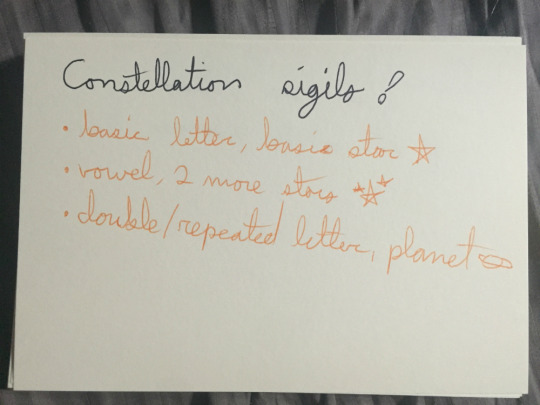
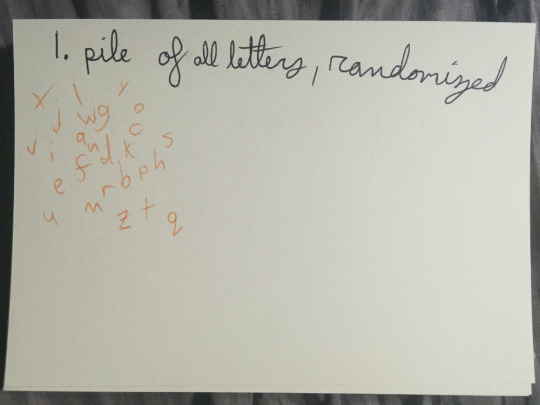
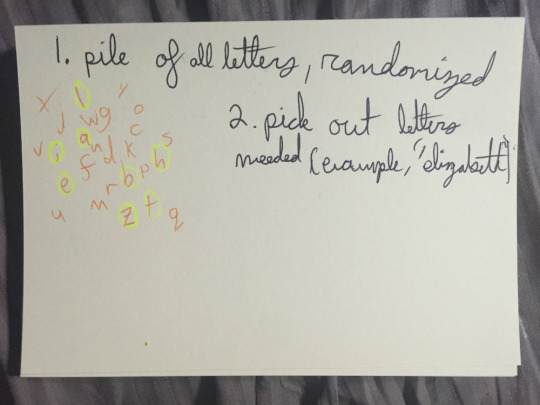
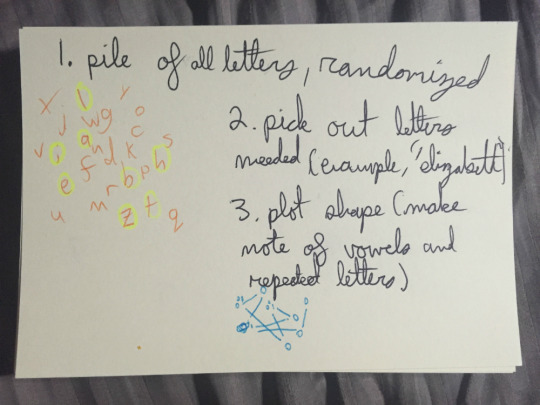

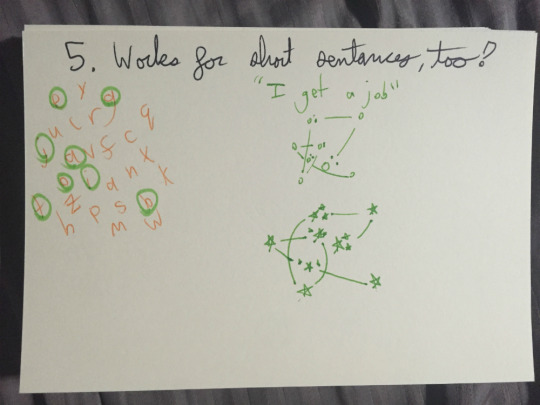
5K notes
·
View notes
Photo
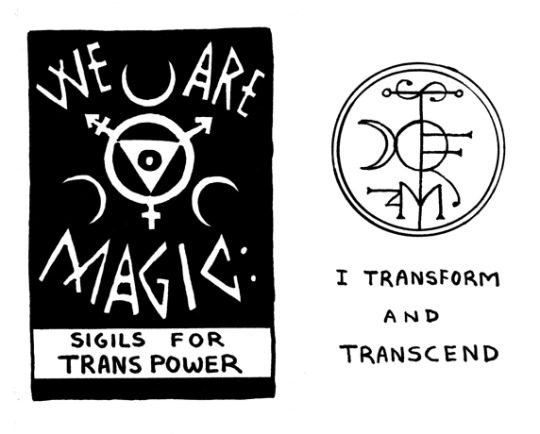


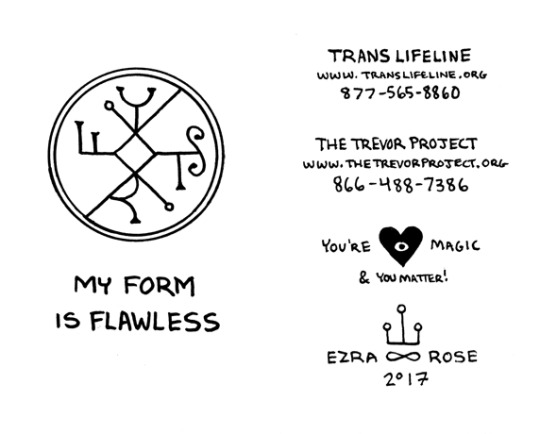
My most recent zine is a 1-page-fold love letter to the trans community, & it’s free for you to download, print & share here. I’ll have some physical copies on my table at MICExpo 2017, too.
Sigil text was gathered from friends & strangers (thank you!), sigils were created by me using my own method. All of these can be used regardless of gender identity & you can copy them onto whatever you need, I just ask that you don’t sell them (or this zine). Stay strong.
© 2017
8K notes
·
View notes
Text
Sekhmet
She was born from the plague, and likewise could heal it. A fierce lion Goddess who could both destroy and heal at any whim, a true force to be reckoned with. She is both of war in the literal battlefield sense, and in the personal sense of illness. Yet, not many are aware of her nurturing side, being related to hathor, yet fewer still, see it. As her femininity is of the lioness, protective of her own and dangerous to whoever threatens. It takes a true warriors heart to connect with her.
45 notes
·
View notes
Text
I remember when I was younger and obsessed with Greek mythology I used to wish so hard that the gods were actually real. Little did I know that they were there the whole time
2K notes
·
View notes
Photo


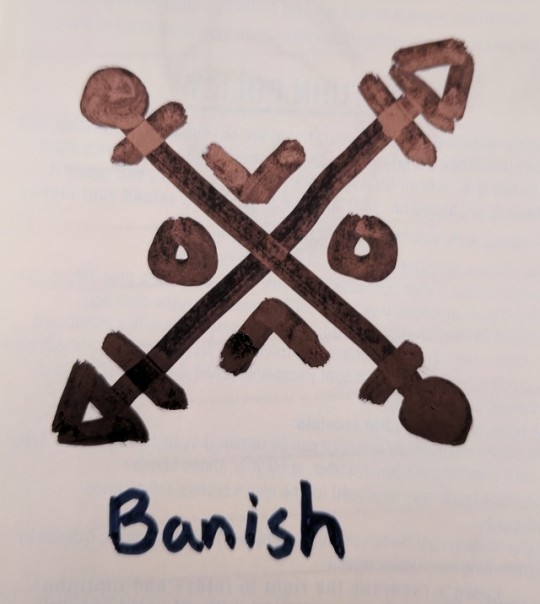
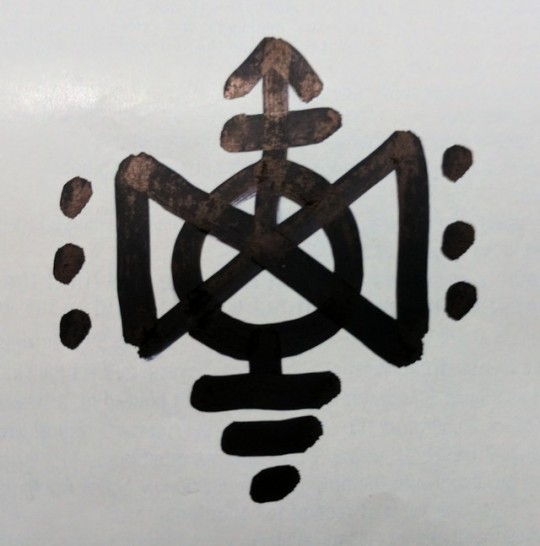
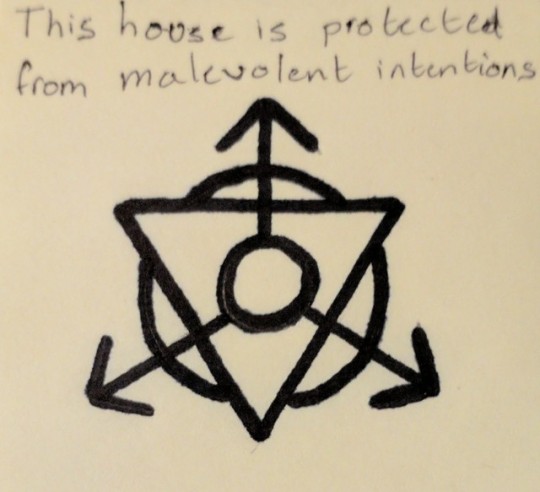

Owen made all of these cool sigils! The first, third, fourth, and fifth are great for protection and warding off malicious spirits, with the fourth one being “Unwanted spirits are not welcome here.”
The second is “My clair-senses and psychic abilities are heightened”! The last one pairs nicely with it, methinks.
All made by the rad @thatgayguywitch , aka, our beloved Owen!
-Mod Celeste and Intern Owen
978 notes
·
View notes
Text
dismantle the idea of spiritual practice as something you’re “Good At” (as if there’s a meditation olympics with a panel of judges scoring offerings out of 10) and turning it into yet another metric of comparison and competition
spiritual practice is a process - a collaboration between you and the gods
it’s not an endpoint. there’s always more.
1K notes
·
View notes
Text
The Basic Basics of Ancient Greek
For @temples-wreathed-in-laurel and anyone else who wants to learn :)
Alphabet and Pronunciation
The pronunciation I use is reconstructed Ancient Greek pronunciation as I was taught at school. It’s basically modern Greek, except the pronunciation of some letters is different. There is some debate about how Ancient Greek sounded, however, so others who have studied it may disagree with me.
Α, α: alpha, corresponds to English A. Pronounced “ah”, as in that sound you make when you notice something that displeases you.
Β, β: beta, corresponds to English B and is pronounced the same way.
Γ, γ: gamma, corresponds to English G and is pronounced the same way. In front of κ, μ, ν, ξ, or χ it is pronounced “ng” as in “doing”.
Δ, δ: delta, corresponds to English D and is pronounced the same way, only a little bit more dental (try saying it by putting your tongue against your teeth).
Ε, ε: epsilon, corresponds to a short English E. American and British English don’t really have a sound for it (though I may be mistaken) but it is pronounced a bit like French “é” or “get” with a New Zealand accent.
Ζ, ζ: zeta, corresponds to English Z. Pronounced “dz”. Some people pronounce it “ts” or “z”.
Η, η: eta, corresponds to a long English E. Pronounced “eh” as in “there” or “fair”.
Θ, θ: theta, doesn’t have an English equivalent. Pronounced “th” as in “think”.
Ι, ι: iota, corresponds to English I. Pronounced “ee” as in “keep”.
Κ, κ: kappa, corresponds to English K and is pronounced the same way.
Λ, λ: lambda, corresponds to English L and is pronounced the same way, only a little more dental (like the delta).
Μ, μ: mu, corresponds to English M and is pronounced the same way.
Ν, ν: nu, corresponds to English N and is pronounced the same way.
Ξ, ξ: xi, corresponds to English X. Pronounced “ks”.
Ο, ο: omikron, corresponds to a short English O. Pronounced “o” as in “or”.
Π, π: pi, corresponds to 3.14159 and English P. Pronounced “three point one four one five nine” or simply “p”.
Ρ, ρ: rho, corresponds to English R. It is trilled as in modern Greek or Spanish.
Σ, σ, ς: sigma, corresponds to English S. Pronounced “s” as in “snake”. Sigma is special because there are two ways of writing it. ς is only used at the end of the word, and is σ used everywhere else (ex: κοσμος).
Τ, τ: tau, corresponds to English T and pronounced the same way, only a little more dental (like the delta and lambda).
Υ, υ: upsilon, corresponds to English U. Pronounced “ew” as in that sound you make when you’re disgusted, only a little more closed (like the French “u”).
Φ, φ: phi, doesn’t have an English equivalent. Pronounced “f”.
Χ, χ: khi, doesn’t have an English equivalent. Pronounced “ch” like the German “ach”. Try to growl like a tiger, sounding both fierce and annoyed at the same time, and you might have it.
Ψ, ψ: psi, doesn’t have an English equivalent. Pronounced “ps”.
Ω, ω: omega, corresponds to a long English O. Pronounced “oh” as in “got” with a British accent (as opposed to the American “gaht”).
Ancient Greek also has diphthongs, meaning two letters making one single sound (English has this with “ou”, for example). These are:
αι: pronounced “ay”, like the word “eye” but more like the Spanish “Ay!”.
ει: pronounced “ey” as in “hey”.
οι: pronounced “oy”.
αυ: pronounced “ow” as in that sound you make when you’re hurt.
ευ: this one’s a bit difficult. It’s like “ew”, except instead of the “e”, you use the epsilon sound described above.
ου: pronounced “oo” as in “cool”, but more closed (like the French “ou”).
Here’s a sentence as an example:
Παιδευω την αρχαιην ελληνικην γλωσσην μετα σιστεροφιρις.
That means: I am learning the Greek language with sisterofiris. Try to read it using the pronunciation above!
Except there’s a small problem with the sentence above, namely: accentuation.
Accentuation
Ancient Greek, unlike modern Greek, has many accents. There are two types: tonal accents, which show you where the stress is in a word, and breathings, which show you whether or not there’s an “h” sound at the beginning of a word.
When using capital letters, these accents are written before the letter (example: Ά). Otherwise, they are written on top of the letter (example: ά). They are only written on vowels, with the exception of ρ, which always takes a rough breathing (ῥ) at the beginning of a word.
ἁ is a rough breathing. It means that this letter is pronounced “ha”.
ἀ is a smooth breathing. It means that this letter is pronounced just “a”.
ά is an acute accent (not to be confused with a cute accent). It means that you stress this syllable. Your voice goes up, like when you ask a question.
ὰ is a grave accent. It basically means there is no accent. Ignore it.
ᾶ is a circumflex accent. It means that this syllable is long and stressed. Your voice goes down.
Breathings are only used at the beginning of a word. So if your name is Hank, great! But if your name is Rihanna, sorry, you’ll have to settle for Rianna.
You can have any combination of one breathing and one tonal accent on a letter. This means you can have letters that look like this: ἂ, ἇ, ἅ. But you can only have one breathing, and only one tonal accent, on a letter at a time.
As a general rule, you can only have one tonal accent per word, but there are exceptions. Some very short words don’t have tonal accents at all.
With this in mind, let’s rewrite our sentence:
Παιδεύω τὴν ἀρχαίην ἑλληνικήν γλώσσην μετα σιστεροφίρις.
But wait, there’s more!
Punctuation
There are four different kinds of punctuation in Ancient Greek: the question mark, the colon/semi-colon, the comma and the full stop.
; is the question mark. Confusing, I know. In a sentence, this would be: Παιδεύω τὴν ἀρχαίην ἑλληνικήν γλώσσην μετα σιστεροφίρις; Am I learning the Ancient Greek language with sisterofiris?
˙ is very small, but it is both the colon and the semi-colon. Παιδεύω τὴν ἀρχαίην ἑλληνικήν γλώσσην μετα σιστεροφίρις˙ και… I am learning the Ancient Greek language with sisterofiris; and… Or I am learning the Ancient Greek language with sisterofiris: and…
, is the comma. It works just like in every other language.
. is the full stop. Like the comma, it works just the same as in every other language.
Unfortunately, there is no exclamation mark in Ancient Greek, so you can’t excitedly say:
I am learning the Ancient Greek language with sisterofiris!
2K notes
·
View notes
Photo

The Key to Courage Spread
We all have times when we feel afraid. Sometimes our fear is unfounded, sometimes it’s justified; healing and wisdom come when we know the difference. That’s what this spread is for: To help identify healthy vs. unhealthy fears and offer possibilities for how to cope with them.
1. What is the foundation of my fear?
What exactly is causing my fear? Is it an external source, or an internal insecurity?
2. How can I begin to move away from my fear?
How can I be less afraid in a way that’s healthy for me?
3. How can I take action in spite of my fear?
What can I start doing right now to move forward, even though I’m still afraid?
4. Should I attempt to eliminate this fear?
Is this a healthy or unhealthy fear? Should I focus my effort into eliminating this fear altogether, or shouldn’t I?
5. How is this fear hurting me?
How is this fear making me a less happy, healthy, and productive person?
6. How is this fear helping me?
How is this fear making me a stronger, safer, or more wise person?
5K notes
·
View notes
Text
me: uh hey apollo can i get some signs that you’re hanging around today-
apollo: HERE’S FIVE COINCIDENCES WITH MY NAME SMACKED ONTO THREE OF THEM
me:

395 notes
·
View notes
Text
i think many pagans have a hard time with the fact that sometimes deities wont give you signs or communicate with you.
29 notes
·
View notes
Photo



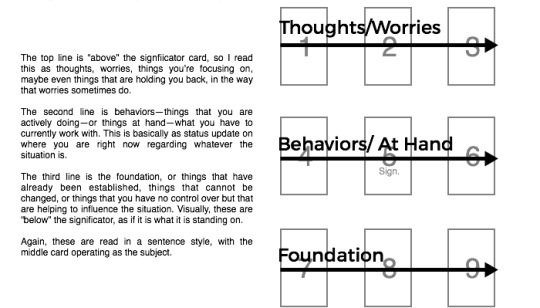
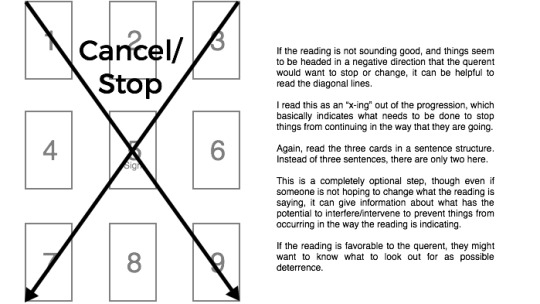



The last post I made about using the Lenormand reading style using Tarot cards was pretty well received, so I decided to show another typical spread for Lenormand–The Portrait.
If you did not see my last post about how to use Tarot when reading Lenormand spreads, I would suggest starting there because it says a bit more about the reading style of Lenormand and has an example so you can see how it plays out with Tarot cards.
For more on reading Tarot in Lenormand style, check my tags for all the posts.
7K notes
·
View notes
Text
me: [walks into a psychic’s shop and slams down my tarot cards] it’s time to duel
128K notes
·
View notes
Text
For the love of gods
IF YOU WORSHIP GREEK GODS PLS REBLOG THIS I NEED TO FOLLOW MORE PEOPLE
1K notes
·
View notes
Note
How do I reach out to Dionysus and what are some things he likes that I can give him? Also do you have any more information about Dionysus in general? Thanks
You can reach out to all of the Theoi through prayer and offerings, that’s how you build a relationship with the Gods in Hellenism. While not necessary, a lot of folks like to introduce themselves when they first start honoring a specific deity. You can do that by making an offering and sort of telling the Theos you’re honoring why you want to worship Them and build a relationship with Them.
I’ve got tons of info for you on Dionysos. I don’t have one nice pretty link for you because I’m in the process of writing a full article, but in the mean time, here’s some stuff for you to check out
Dionysos’ Page on Theoi.com
About Dionysos (a quick overview)
Dionysus and His Retinue by Winebrightruby
Dionysos Festivals
Dionysus Resources assembled by amaskofivy
My Dionysos* tag
51 notes
·
View notes
Text
Working With Sekhmet

Before I even knew the word kemetism I was interested in working alongside some of the Egyptian deities. One goddess had caught my eye; a strong beautiful warrior lioness who took down enemies with the swipe of her claws, Sekhmet.
During the time I was doing this research and dwelt into possibly working with Sekhmet, I was going through a rough emotional time. To avoid much detail; I felt weak, used, and controlled and I wanted revenge on those who made me feel that way. I wanted to rise above them, to conquer them and give them no more power over me, to show them how I was stronger.
So of course Sekhmet was the perfect goddess I saw fit to worship. She was strong and independent, what I wanted. So I prayed. I connected with her and began a fellow companionship; casual conversations. I asked for her strength and for her to lead me on a powerful path, and she delivered.
I overcame the shitty feelings I had and felt like the strong thriving woman I desired to be. But there was another side. With these great confident feelings I also began exhibiting violent impulses to physically hurt those that had emotionally hurt me. But, being me, a 90 lbs 5’4 girl… I wouldn’t exactly stand a chance in a fight even if I had all the gods rooting behind me. This began to become a problem; I would emotionally lash out more often and felt like I must avenge my own symbolic death from those that had “killed” me.
Sekhmet is an astounding goddess in all her glory and I still worship to her today, but I understood that worshiping Sekhmet alone can be dangerous. So who else to worship then?
The answer lied in the own origin story of Sekhmet, the Eye of Ra sent to bring chaos among the people, and you know the rest. After Sekhmet fell asleep out of drunkenness, she transformed into Hathor, the loving cow goddess, a complete contradiction of Sekhmet; two sides of the same coin. The two goddess are worshipped separately but in their stories they are the same being. Sekhmet is a predator, a lion while Hathor is prey, a cow. Hathor represents joy and love while Sekhmet represents war. The two coincide with each other and are an ideal couple to worship together. Sometimes you need the strength of Sekhmet while other times you need the love of Hathor.
I’m a strong believer of unity; you cannot have happiness without sadness. Living on one side of the scale is dangerous. If you’re happy all the time you’ll never truly enjoy it, you need the rain to enjoy the shine of the sun. In some occasions you definitely need one side more, but once you find that balance it’s a perfect place to stay.
So my advice to anyone looking to be a devotee to Sekhmet is also look into Hathor. They are both beautiful and strong goddesses, but in different ways, both important ways.
2K notes
·
View notes